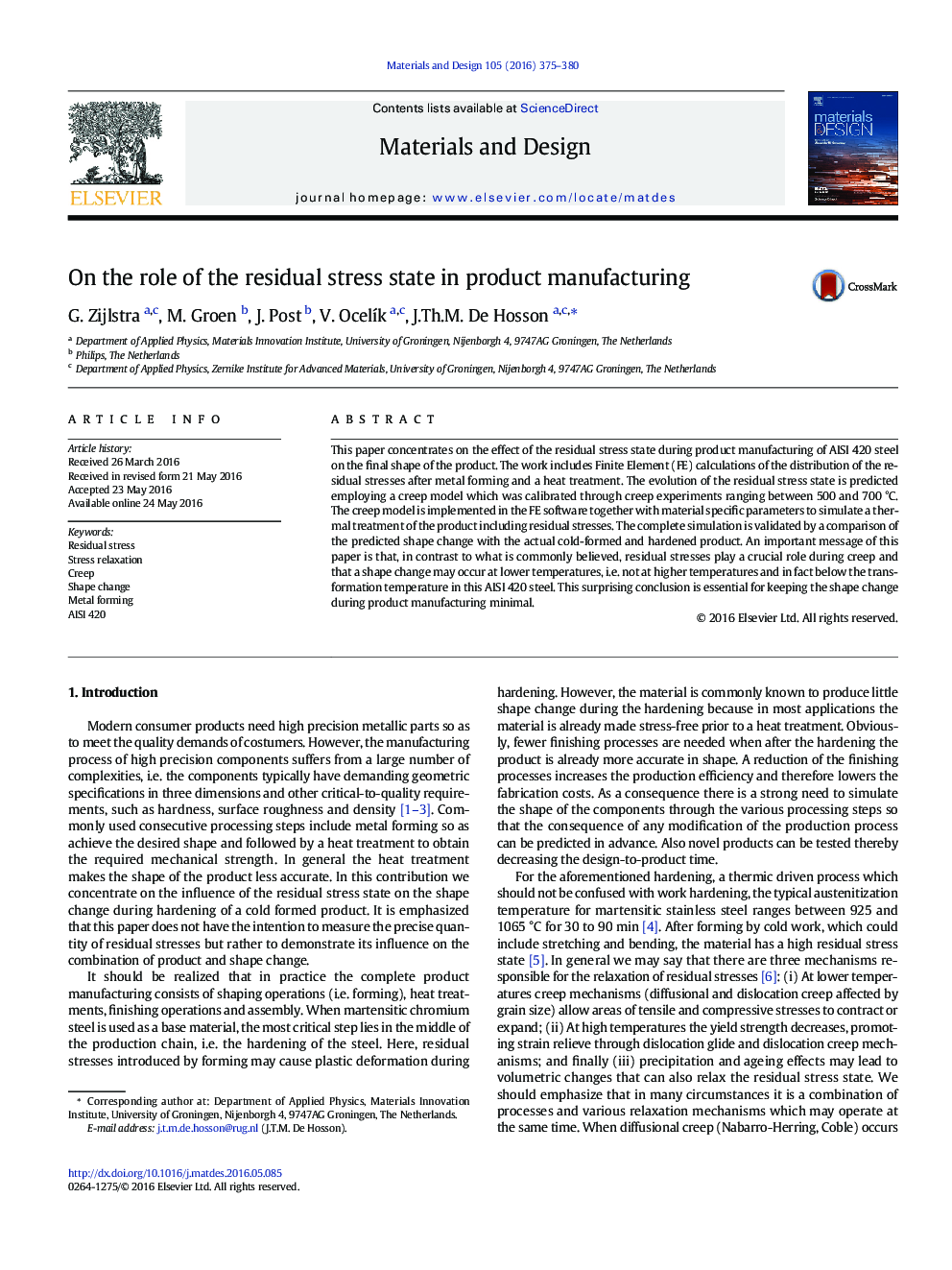| کد مقاله | کد نشریه | سال انتشار | مقاله انگلیسی | نسخه تمام متن |
|---|---|---|---|---|
| 827850 | 1470277 | 2016 | 6 صفحه PDF | دانلود رایگان |
• Residual stresses play a crucial role during creep.
• Shape change may occur at lower temperatures, below the transformation temperature in AISI 420 steel.
• Phenomenon of creep can be implemented in Finite Element calculations on real product manufacturing.
This paper concentrates on the effect of the residual stress state during product manufacturing of AISI 420 steel on the final shape of the product. The work includes Finite Element (FE) calculations of the distribution of the residual stresses after metal forming and a heat treatment. The evolution of the residual stress state is predicted employing a creep model which was calibrated through creep experiments ranging between 500 and 700 °C. The creep model is implemented in the FE software together with material specific parameters to simulate a thermal treatment of the product including residual stresses. The complete simulation is validated by a comparison of the predicted shape change with the actual cold-formed and hardened product. An important message of this paper is that, in contrast to what is commonly believed, residual stresses play a crucial role during creep and that a shape change may occur at lower temperatures, i.e. not at higher temperatures and in fact below the transformation temperature in this AISI 420 steel. This surprising conclusion is essential for keeping the shape change during product manufacturing minimal.
Left: Cross-section of simulated cups with contour plots of the equivalent Von Mises stress. High stresses after forming are detected. Middle: Bottom flatness of the fabricated (solid lines) and simulated cup (dashed), normalized at 90°. Bottom flatness after forming is presented in red and after heating in black. Right: relaxation of the stresses after heating to 700 °C.Figure optionsDownload as PowerPoint slide
Journal: Materials & Design - Volume 105, 5 September 2016, Pages 375–380
